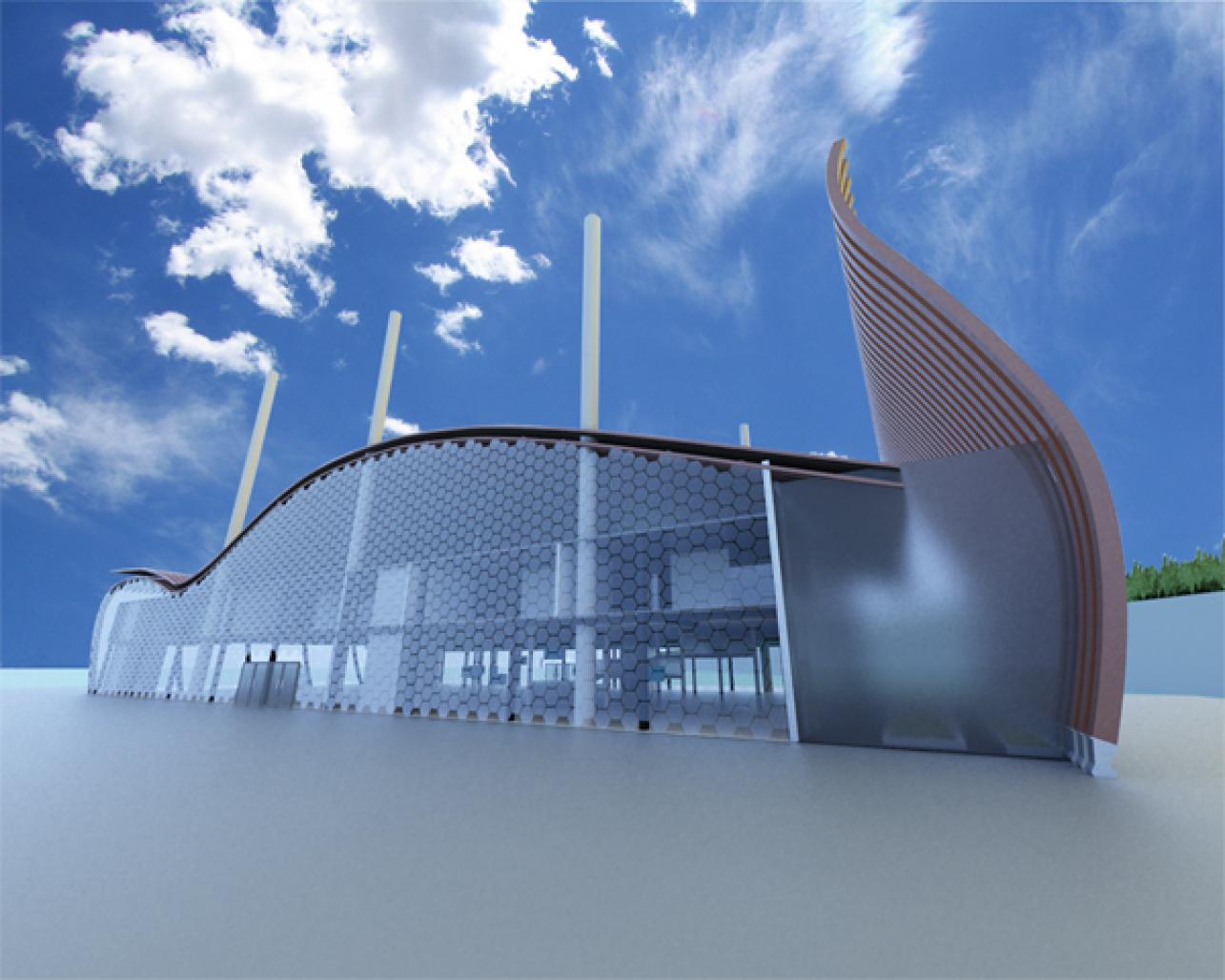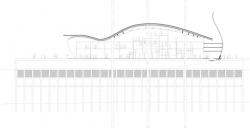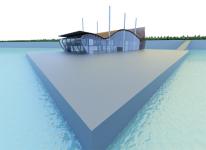Floating World Sustainability Centre:
Sea level rise, increased precipitation and river flooding, storms and droughts: our climate changes and we need to act now. Radical change is needed, change towards sustainable energy, sustainable land-and water management, sustainable mobility, sustainable production and consumption patterns. The rise of the sea level endangers a great part of the world. For many countries it is a threat not encountered before. With current climate change mitigation policies and related sustainable development practices, global greenhouse-gas emissions will continue to grow over the next few decades. Therefore, we have to intensify our efforts. Also, adaptation to climate change is of the essence.
More than a quarter of Holland’s land is below sea level and, with global warming causing the polar ice caps to melt, sea levels are inevitably rising, potentially causing large tracts of Holland to flood. In meeting the brief for Holland’s World Sustainability Centre, which aims to highlight the issues and challenges of sustainability, my question has been ‘why can’t the building itself be a showcase for issues and potential solutions?’ Taking into account the sustainability problems that Holland in particular, and the world in general, faces, the Centre itself becomes a showcase for how buildings should be designed and constructed.
The World Sustainability Centre will inform and inspire people to transform their lives in a sustainable way. The Centre will be a showcase of new and innovative products and projects. Top level research institutes will demonstrate their latest inventions on energy or water management. Inventors will discuss their ideas with the public. Visitors can experience climate change, storms, rivers flooding and melting ice exhibitions. It will help find new solutions to global problems and try out ground-breaking inventions.
The building is completely self sufficient, providing its own power, water supply and natural heating and ventilation systems. The space needs to be flexible to provide for change, so a modular approach is introduced. The space as a whole is open and not enclosed, permitting the public to circulate with ease. Semi-private areas also reflect an open, fluid atmosphere.
The building’s facade is made up of 4500 IEC solar facade panels. These are eight times more efficient than regular photovoltaic panels which, along with 35 underwater wind turbines, harvest enough energy for the building to be self maintaining for life. All materials used in construction are either reclaimed from local yards or are sustainably produced. For example, the concrete used throughout the structure is eco-concrete.
A small micro-environment is also in place, allowing for local agricultural products to be grown and in turn providing heating for the building
2009
Favorited 3 times



.jpg)


.jpg)

